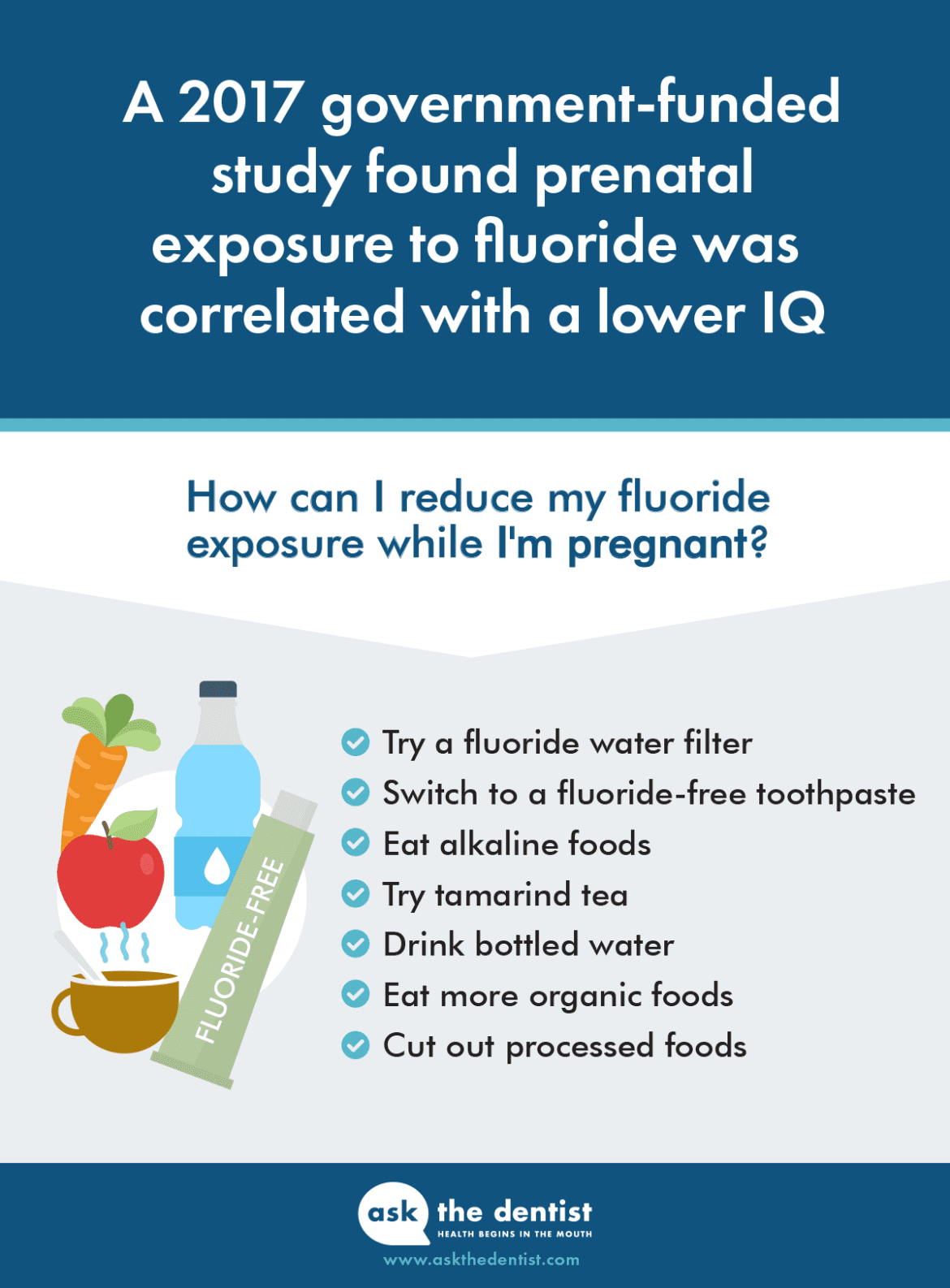Disclosure:Ask the Dentist is supported by readers. If you use one of the links below and buy something, Ask the Dentist makes a little bit of money at no additional cost to you. I rigorously research, test, and use thousands of products every year, but recommend only a small fraction of these. I only promote products that I truly feel will be valuable to you in improving your oral health.
One of the controversial topics every parent has to contend with is fluoride intake. And with new research bringing up more questions than answers, the connection between fluoride and IQ is all but indisputable.
A 2017 study published in Environmental Health Perspectives has linked exposure during pregnancy to reduced IQ in those children later in life. (1)
This comes on the heels of dozens of other studies that seem to suggest fluoride impacts the development of the brain and human intelligence.
In this article, we’ll review what this study means for you and your baby.
New Findings on Prenatal Fluoride and IQ
A US government-funded study was released on September 19, 2017 to examine the relationship between a mother’s exposure to fluoride and the child’s cognitive development.
Researchers found that low levels of fluoride intake during pregnancy are linked to significantly reduced IQ in those children later in their life.
The study took other factors into account and made sure to establish controls, such as socioeconomic status, smoking, marital status, age, etc.
Researchers measured the amount of fluoride present in the urine of the pregnant participants. Levels in the urine are an extremely accurate indicator of total fluoride intake.
Years later, the researchers measured the intelligence of the children born to these women by giving them an IQ test. At age 4, and then again between 6-12 years, IQ levels were significantly lower in children exposed to higher levels of fluoride in utero. (1)
This is the only high-quality study with controls that has tested prenatal fluoride and IQ, so the results need to be replicated to be sure.
However, it’s true that fluoride passes through placenta to baby’s blood. (2)
Therefore, any fluoride a pregnant mother is ingesting would also reach the unborn child.
In the study, which was conducted in Mexico, the level of exposure is probably close to the level we are exposed to in our fluoridated water.
Do these results actually apply in the United States?
The biggest difference between the communities in Mexico and the US water supply is that the fluoride in Mexico is naturally occurring, not added.
At first glance, you might think that doesn’t matter. And maybe it doesn’t.
But you should also know that calcium fluoride, which is naturally occurring in groundwater (like in Mexico), isn’t what’s in your water.
Neither is sodium fluoride, in nearly every one of the 75% of communities in the United States with fluoridated water. That’s what it used to be, but since the 1990s, things have changed—although pharmaceutical grade sodium fluoride is still found in toothpaste.
Actually, the main source of fluoride in water is hydrofluorosilicic acid (HFS).
Before it was put in your water,…

